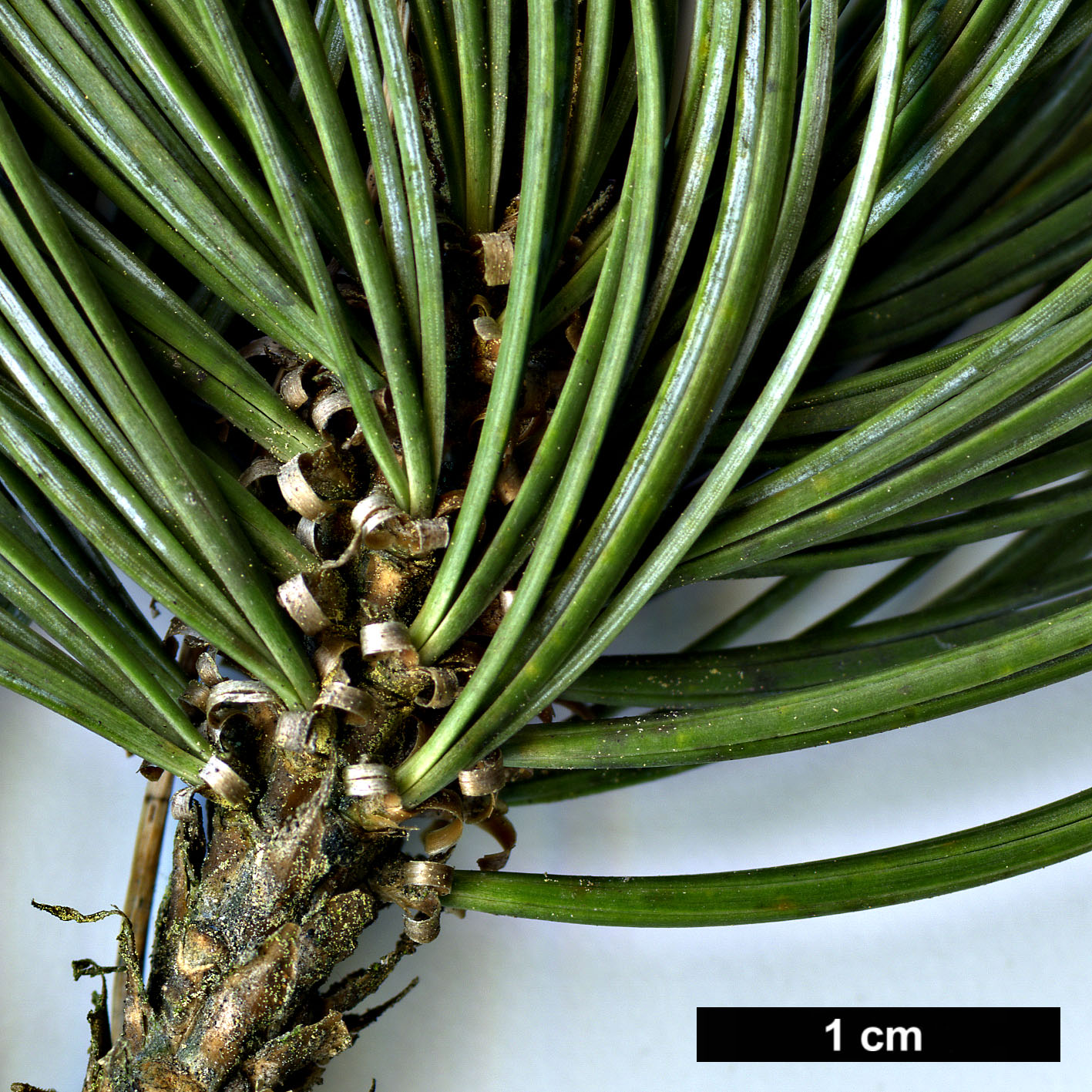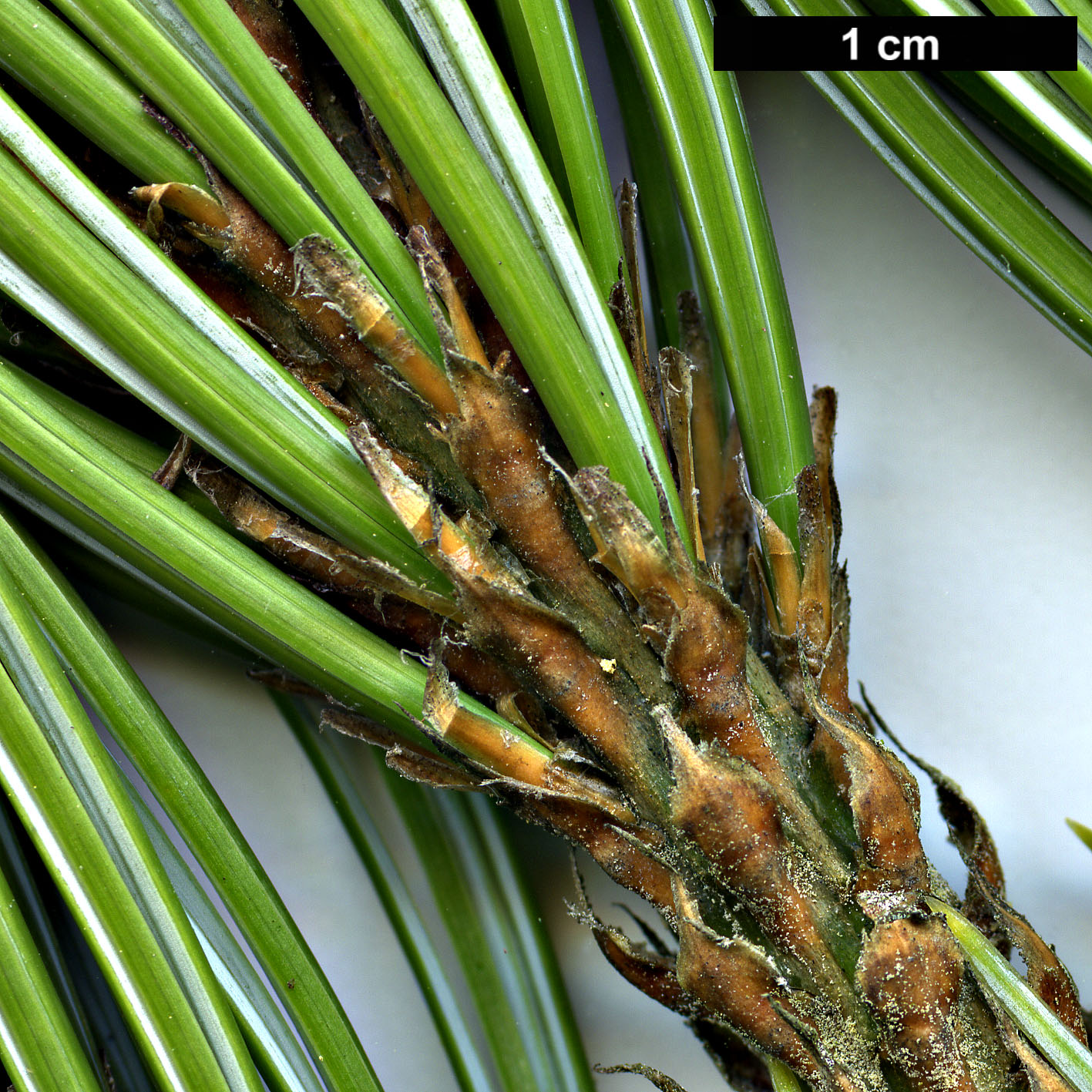Pinus culminicola
Credits
Article from New Trees by John Grimshaw & Ross Bayton
Recommended citation
'Pinus culminicola' from the website Trees and Shrubs Online (treesandshrubsonline.
Genus
- Pinus
- Subgen. Strobus, Sect. Parrya
Common Names
- Potosí Pinyon
Other taxa in genus
- Pinus albicaulis
- Pinus arizonica
- Pinus armandii
- Pinus attenuata
- Pinus ayacahuite
- Pinus balfouriana
- Pinus banksiana
- Pinus bhutanica
- Pinus brutia
- Pinus bungeana
- Pinus canariensis
- Pinus cembra
- Pinus cembroides
- Pinus chiapensis
- Pinus contorta
- Pinus coulteri
- Pinus densata
- Pinus densiflora
- Pinus devoniana
- Pinus durangensis
- Pinus echinata
- Pinus edulis
- Pinus elliottii
- Pinus engelmannii
- Pinus eremitana
- Pinus flexilis
- Pinus gerardiana
- Pinus greggii
- Pinus × hakkodensis
- Pinus halepensis
- Pinus hartwegii
- Pinus heldreichii
- Pinus henryi
- Pinus × holfordiana
- Pinus hwangshanensis
- Pinus jeffreyi
- Pinus johannis
- Pinus koraiensis
- Pinus lambertiana
- Pinus leiophylla
- Pinus longaeva
- Pinus massoniana
- Pinus maximartinezii
- Pinus monophylla
- Pinus montezumae
- Pinus monticola
- Pinus morrisonicola
- Pinus mugo
- Pinus muricata
- Pinus nelsonii
- Pinus nigra
- Pinus oocarpa
- Pinus orizabensis
- Pinus palustris
- Pinus parviflora
- Pinus patula
- Pinus peuce
- Pinus pinaster
- Pinus pinceana
- Pinus pinea
- Pinus ponderosa
- Pinus pseudostrobus
- Pinus pumila
- Pinus pungens
- Pinus quadrifolia
- Pinus radiata
- Pinus remota
- Pinus resinosa
- Pinus rigida
- Pinus roxburghii
- Pinus sabiniana
- Pinus serotina
- Pinus sibirica
- Pinus strobiformis
- Pinus strobus
- Pinus sylvestris
- Pinus tabuliformis
- Pinus taeda
- Pinus taiwanensis
- Pinus teocote
- Pinus thunbergii
- Pinus torreyana
- Pinus virginiana
- Pinus wallichiana
- Pinus wangii
- Pinus yunnanensis
Shrub or tree to 5 m, trunk short, leaning, often forked, 0.1–0.25 m dbh, the branches spreading from the base for 3–4 m. Bark thin, dark grey, scaly on the lower trunk. Crown dense and shrubby. Branchlets stout, rough; vegetative buds 1–2 cm, pale grey-brown, slightly resinous. Leaves in fascicles of five, persisting for three to four years, slightly curved, rigid, epistomatic, dark green on outer face, glaucous blue-white on inner face, triangular in cross-section, 3–5 × 0.09–0.13 cm, apex acute. Fascicle sheaths to 0.6–0.8 cm long, light grey-brown. Cataphylls 0.5–0.7 cm long, grey. Male strobili yellow, ovoid to subglobose, 0.5–0.8 cm long, pollinating in summer. Female cones subterminal, solitary or in whorls of two to three; peduncles short, nearly sessile, with semi-persistent cataphylls. Cones (2–)2.5–4.5 × 3–5.5 cm, dark green, maturing dark brown, mature in about 15 months; mature cones globose or subglobose with a flat base, forming an irregular rosette when fully open. Scales 45–60 (of which 10–20 fertile), opening widely, weakly attached to cone rachis; apophysis raised, light brown to dark to reddish brown, coarsely wrinkled; umbo dorsal, 4 mm wide, flat to slightly raised, dark brown to grey with a minute, deciduous prickle. Fertile seeds dark grey-brown (infertile seeds pale buff), 0.9–1.3 × 0.8–0.9 cm; wings vestigial, remaining attached to the seed scale. Perry 1991. Distribution MEXICO: eastern Coahuila, western Nuevo León. Habitat Isolated mountain summits between 3000 and 3710 m asl. USDA Hardiness Zone 7. Conservation status Endangered. Illustration Perry 1991. Cross-reference K215.
Closely resembling Pinus johannis in form but easily distinguished by its leaves in fives (in threes in P. johannis), P. culminicola is an endangered species, confined to a few mountain summits in northeastern Mexico, and only abundant on the highest, Cerro Potosí, where it forms nearly pure stands at the 3710 m summit. There have been several introductions to cultivation since its discovery in 1961, including a gathering by Harold Hillier in 1979 (Lancaster 2005). A few individuals from this collection persist in private gardens in Hampshire and have recently been propagated (R. Lancaster, pers. comm. 2008). Others are on the Rock Garden at Edinburgh (grown from Frankis 156 collected in 1991, and Compton, D’Arcy & Rix 1280 in 1993, both collections originating in Nuevo León). The dark green and glaucous foliage makes this a particularly attractive shrub, ideal for rock gardens or low landscaping and suitable even for small gardens.






